
Speed is a contributing factor in approximately one fourth of fatal collisions in Canada. Driving at safe speeds and respecting the posted speed limit saves lives. Reducing speeding on Toronto roads is an important objective in the City’s Vision Zero Road Safety Plan.
Residents in Toronto can use the tools and resources outlined in this Safe Speeds Toolkit to address speeding concerns in their neighbourhoods.

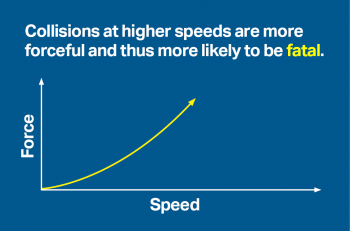
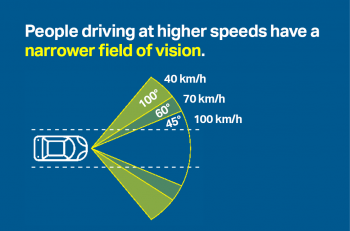
Traffic Calming is a commonly-used term associated with the installation of physical design and other measures to combat speeding and other unsafe behaviours by motorists.
The Council-approved 2023 Traffic Calming Policy defines traffic calming as mid-block, vertical deflections: namely, speed humps or speed cushions on local and collector roadways and speed bumps in laneways.
Consideration of physical traffic calming on a street can be initiated by the local Councillor. You can contact the office of your local Councillor to discuss the traffic calming options available in your neighbourhood.
Higher speeds contribute to a higher risk of serious injuries and fatalities by reducing driver reaction time, increasing the vehicle stopping distance, and inflicting more severe blunt force trauma on victims upon impact. The City is currently reducing speed limits to curb speeding and minimize traffic-related fatalities on Toronto roads.
The City reduced the speed limit on 500 kilometres of arterial and collector roadways from November 2019 until the end of 2020 and is currently reducing the speed limit on local roads and public lanes in Etobicoke, North York and Scarborough to 30 km/h. This is a multi-year, data-driven effort that is being rolled out on a ward-by-ward basis to bring local roads and public lanes in the city under a consistent speed limit.
You can use the Vision Zero Mapping Tool to view where the speed limits have been changed in Toronto.
Learn more about speed limit reductions.
Automated Speed Enforcement devices, or speed cameras, detect and capture images of vehicles travelling in excess of the posted speed limit. It is designed to work in tandem with other Vision Zero methods and strategies, including engineering measures, education initiatives and traditional police enforcement. Automated Speed Enforcement is focused on altering driver behaviour to decrease speeding and increase safety.
There are 75 Automated Speed Enforcement devices that regularly rotate throughout the city to help reduce speeding at more areas with safety concerns and to encourage a wide-ranging deterrent effect. Locations are selected through a data-driven approach that considers speed and collision data. As per Provincial legislation, devices can only be installed in School Safety Zones and Community Safety Zones.
Learn more about the City’s Automated Speed Enforcement program and how to submit a request for the consideration of an Automated Speed Enforcement device in your neighbourhood.
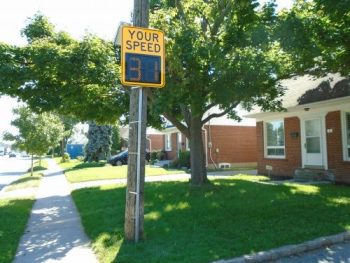 A mobile Watch Your Speed Sign measures the speed of oncoming vehicles and displays it to remind drivers to check their speeds and obey the speed limit. These signs are only used to display information. They do not issue speeding tickets.
A mobile Watch Your Speed Sign measures the speed of oncoming vehicles and displays it to remind drivers to check their speeds and obey the speed limit. These signs are only used to display information. They do not issue speeding tickets.
Learn how to request a Watch Your Speed sign for your street.
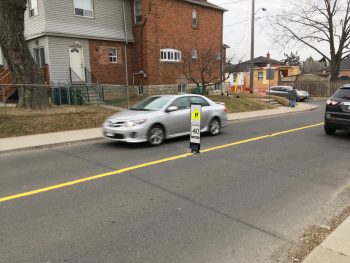
The City is currently installing in-road flexible speed signs to encourage compliance with the posted speed limit in high-priority areas. These signs, which have a narrowing effect on the lane/roadway, serve as both a visual reminder of the posted speed limit and a physical device that slows vehicle speeds as drivers pass the signs.
Learn more about the roll-out of in-road flexible speed signs in Toronto.
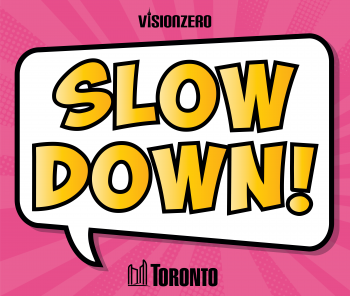
You can help remind drivers to slow down and to be aware by displaying a “Slow Down” lawn sign. These signs are one way to make drivers aware of their speed as they travel in residential areas.
You can contact the office of your local Councillor to request a Slow Down lawn sign.
The City has published five road safety guides for pedestrians, people cycling, schoolchildren and their parents, older adults, and people riding motorcycles.
Request a free copy of any of the City’s Vision Zero safety guides by emailing visionzeroTO@toronto.ca.
The resources listed on this section have a traffic calming effect even though they are not implemented to directly address speeding.
The City routinely implements various engineering improvements to Toronto’s road network to improve safety, calm traffic and protect vulnerable road users such as cyclists and pedestrians.
Examples of engineering improvements include curb radii reductions, speed humps and bumps, raised crosswalks and intersections, left-turn calming, road narrowing, chicanes, curb extensions, intersection realignments and right-turn channel removal.
Learn about the City’s ongoing engineering improvements.
Provision of safe, comfortable and accessible bikeways is a fundamental object of the City’s Vision Zero Road Safety Plan. The City is working to make travel by bike safer and more inviting, which helps ease congestion on streets and transit, creates a cleaner environment, and promotes physical activity. The City supports cycling by building and maintaining infrastructure such as cycle tracks and multi-use trails, installing bike parking facilities, distributing bike network maps, and carrying out other campaigns and projects to promote cycling confidence and safe road use behaviour.
Learn more about cycling in Toronto. Residents can also email cycling@toronto.ca with questions or new bikeway requests.
Provision of safe, comfortable and accessible sidewalks on all public roads is a fundamental objective of the City’s Vision Zero Road Safety Plan. Sidewalks support safety, accessibility, affordable transportation, physical activity, safe routes to school, aging in place and sustainable growth.
Through the Missing Sidewalk Installation Program, the City reviews opportunities to install sidewalks on all roadway classifications through bundling with other state-of-good-repair roadway projects or utility work, as well as stand-alone delivery.
Learn about walking in Toronto. Residents can also email newsidewalks@toronto.ca with questions or new sidewalk requests.
The City’s school crossing guard program provides an important service for families in Toronto. While school crossing guards are not a countermeasure for reducing speeding, they help children to safely cross the street during their walks to and from school and remind drivers of the presence of pedestrians at key intersections.
Learn about the School Crossing Guard program, how to apply to become a School Crossing Guard and how to request a School Crossing Guard location.